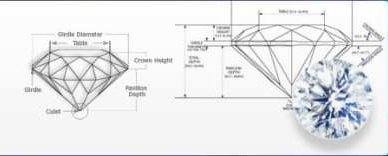How Lab-Grown Diamonds Could Impact the Industry In the Nearest Future
The influence of lab-grown diamonds on the diamond industry as a whole is hard to deny. Still there is room to grow, and as man-made stones are getting more and more accepted, this impact may become more significant at every step of the diamond pipeline: for suppliers, retailers, and consumers.
Last week during the meeting of the Gem and Jewellery Export Promotion Council in India, the plans were announced to support the domestic production of lab diamonds. Indian manufacturers stated that the industry could potentially create up to 1 million jobs to process 150 million carats of lab-created diamonds. At the same time the significant rise in revenue was projected. The CJEPC chairmen announced the strategy to speed up the domestic development and manufacturing of HPHT and CVD machines with the help of the Indian Ministry of Commerce and Industry. At the same time the lab-grown diamond tracking system is expected to be introduced in the following year to monitor supply chain and maintain consumer confidence. India’s exports of polished man-made diamonds more than doubled over the last year, and many growers believe that the support from the government and the council will surely multiply this figure in the next couple of years, especially the volume of export to the United States.

While supply is increasing steadily, the rise of the demand is what truly drives the lab-grown diamond industry. With the new sanctions on Alrosa caused by the Russian-Ukrainian conflict, the market of mined diamonds got shortened by about 40%. Jewelers across the world - from the local stores to the big corporations, such as LVMH, - are starting to look for new diamond sources or an alternative. Many of them are choosing lab-created diamonds. Prices of mined diamonds are projected to rise in the second and third quarter due to the supply disruption, according to Paul Zimnisky. At the same time affordable lab-grown diamond prices will become even more attractive to general consumers. Many American and European store owners are already starting to witness this trend. Big London-based online jewelry retailer has recently reported the dramatic increase in the lab-created diamond category sales, which now account for over 25% of its business. And while the younger generation are choosing based on the sustainability factor, a lot of traditional jewelry buyers also opt for a lab diamond as soon as they “realize they can purchase a 1.5 or 2.0-carat lab-grown for the price of a natural 0.70-carat diamond”.

According to Erwan Rambourg, global co-head of consumer and retail equity research at HSBC, sales of man-created gems will only continue to grow, and it's possible that even the high-end houses like Cartier and Bulgari will use them for their unique pieces, following the recent Tag Heuer’s example. Last couple of years saw the launches of many lab-grown diamond-focused brands, while more traditional companies introduced lab-grown diamond jewelry lines to their inventory. "We tend to see Lab-created diamonds skew to younger customers under 35, but not exclusively. People are looking for bigger, bolder styles, and on average, lab-created diamonds are more significant than the mined diamonds. It's a noticeable value difference." - Bill Brace, the President of Jared and Jewelry Services, said.
A few years ago many industry members speculated that lab-grown diamonds would damage the overall diamond industry. In reality, it seems that man-made gems are a positive influence on the jewelry market. Not only can they attract new generations of consumers, but keep the traditional customers and make them come back to the jewelry stores, with their affordable prices and ever-developing supply chain that is not likely to be disrupted in the foreseeable future.











